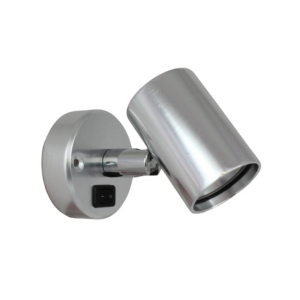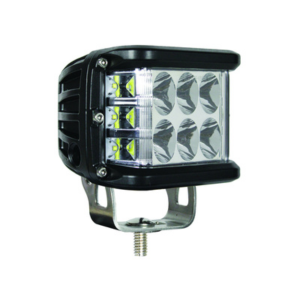LED Lumens Explained
Lumens, the unit of measurement used to quantify the total amount of visible light emitted by a source, play a crucial role in understanding the brightness of LED lights, particularly those operating on a 12-volt system. LEDs are far more efficient than traditional incandescent bulbs, converting a larger portion of their input energy directly into light rather than heat. A 12-volt LED bulb, for example, may produce anywhere from 100 to 1,000 lumens or more, depending on factors such as the LED's size, power consumption, and design. This wide range of lumen output allows 12-volt LED lighting to be tailored to a variety of applications, from subtle accent lighting to high-intensity task lighting. Furthermore, the directionality of LED light, which can be precisely controlled through lens design, enables focused beams that maximise illumination where it's needed most, making 12-volt LEDs ideal for everything from automotive headlights to marine navigation lights. As LED technology continues to advance, the lumen output of 12-volt models will only continue to increase, providing users with brighter, more energy-efficient lighting solutions for an ever-expanding array of uses.
When comparing the brightness of lighting fixtures, the common terms used are "lumens" and "watts." While these measurements may seem interchangeable, they actually represent different aspects of light output. In the context of 12-volt lighting systems, understanding the relationship between lumens and watts becomes particularly important. Lumens refer to the total amount of visible light emitted by a light source, regardless of the direction it is shining. This measurement provides a more accurate representation of the perceived brightness that the human eye will experience. Higher lumen values indicate a brighter light output. In a 12-volt system, the lumen rating allows you to select the appropriate brightness level to meet your specific lighting needs, whether you require a powerful spotlight or a more subtle, ambient glow.
On the other hand, watts measure the amount of electrical power consumed by the light fixture. While watts do not directly translate to brightness, they can provide an estimate of the fixture's energy efficiency and runtime when powered by a 12-volt battery or other limited power source. Generally, LED and other energy-efficient light bulbs will produce more lumens per watt compared to traditional incandescent bulbs, making them a more practical choice for 12-volt applications where power conservation is crucial. By understanding the relationship between lumens and watts in the context of 12-volt lighting, this will help you to select the right fixtures that balance brightness, energy usage, and runtime to suit your specific requirements, whether you're outfitting a recreational vehicle, marine vessel, or off-grid solar setup. The lumen rating allows you to achieve the desired illumination level, while the wattage helps you manage your power consumption and maximize the runtime of your 12-volt system.
Here is a comparison table for different lighting technologies:
| Lumens | Incandescent Watts | Halogen Watts | LED Watts |
| 100 | 7 | 6 | 2 |
| 375 | 25 | 20 | 4 |
| 450 | 30 | 25 | 5 |
| 800 | 60 | 45 | 9 |
| 1100 | 75 | 60 | 12 |
| 1600 | 100 | 90 | 17 |
| 2600 | 150 | 145 | 27 |
| 3000 | 200 | 175 | 32 |
We hope that you have found this article useful, click here to view our wide range of LED lighting.



I think you should have referenced lux or foot-candles which is the measurement of light on a given surface. Referring to lumens is fine but it does not take into account the adjacent surfaces, distance from the area to be illuminated or lamp angle etc.